Estimated reading time: 13 minutes
Typically, dogs pee 20-30 minutes after drinking. However, factors like age, size, health, and activity level can affect this timing. Puppies often pee within 10-15 minutes of drinking due to their smaller bladders. Regular routines, monitoring water intake, and recognizing unusual patterns can ensure your pet’s comfort and health.
When owning a dog, especially for the first time, understanding its needs is vital. You may notice your pup making a beeline to a spot to pee soon after they drink water. So, how long does it take for a dog to pee after guzzling down that fresh water from their water bowl?
The answer varies based on several factors, from the age of the dog – puppy vs. adult dog – to the amount of water they’ve consumed. This article will explore the ins and outs of when you can expect your dog to pee, and why understanding this schedule is essential for both you and your furry friend.
Understanding Dog Pee Basics
Every dog is unique, but there are general patterns when it comes to their need to pee after they drink water. For starters, when your dog drinks, it’s directly adding to the amount of water in their system.
This water travels through their body, helping with digestion, regulating temperature, and then eventually needs an exit. This process is why, after a hearty drink of water, your dog may look at you with those eyes, signaling the need to go outside.
When a puppy drinks water, their smaller body processes it differently than an adult or senior dog. Puppies usually need to urinate after drinking water sooner than their older counterparts.
But how much water does a dog really need, and how does that affect how often they’ll urinate?
How Long After Drinking Water Do Puppies Pee?
The time it takes for a puppy to feel the urge to pee after drinking water can differ from one pup to another. Several factors play a role in this.
- Age and Size: A younger puppy often needs to pee more frequently. Their tiny bladders can’t hold as much, so even small amounts of water can prompt a quick trip outside. Conversely, a bigger puppy nearing adulthood might be able to hold it in a bit longer.
- Amount of Water Consumed: If your puppy has just had a little sip, they might not need to pee immediately. But if they’ve emptied a whole water bowl after a fun play session, be ready for a pee trip soon.
- Activity Level: Just like humans, if a puppy has been active, running around, or playing, they might feel the need to drink more water and subsequently may need to pee more often.
- Diet: What you’ve fed your puppy can also affect their water consumption. Some foods might make them thirstier, leading to increased drinking and thus a quicker need to urinate.
Remember, while adult dogs typically have more predictable patterns, puppies can be a bit more erratic. It’s crucial to observe your puppy’s behavior, note how much water they drink, and then be prepared for a potential pee trip shortly after.
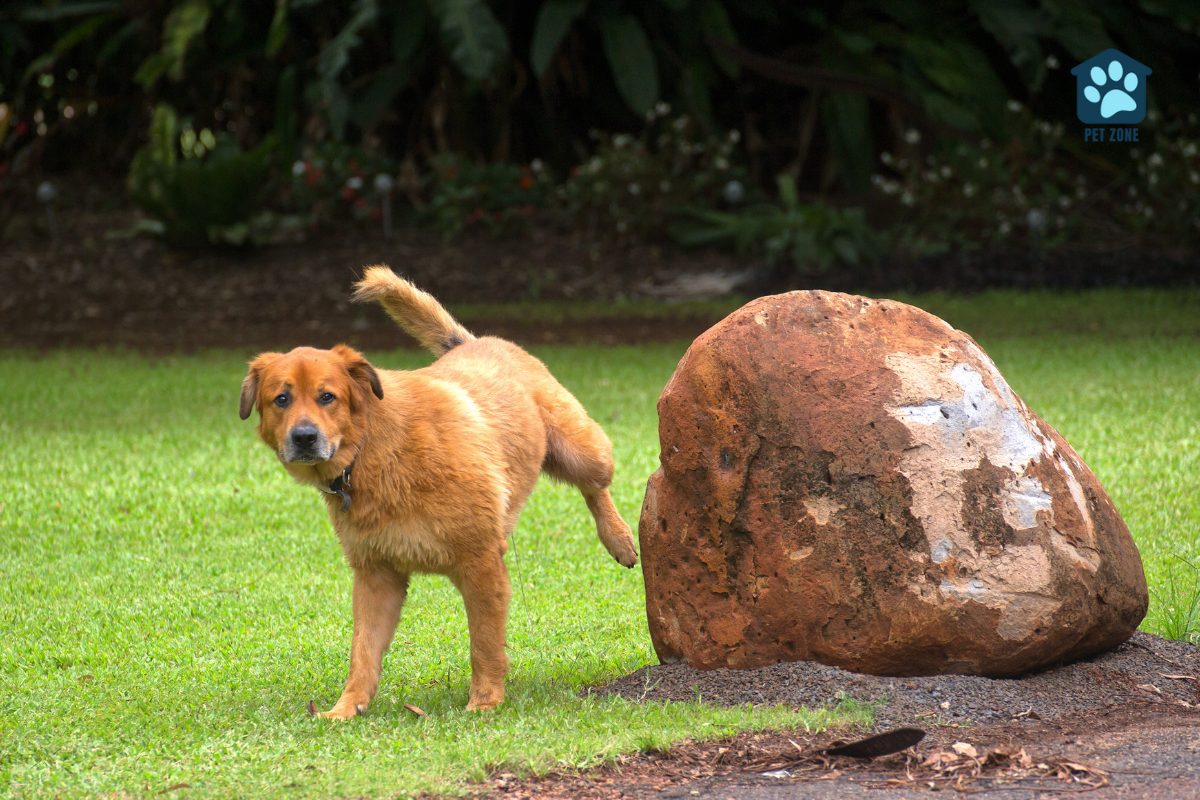
Typical Time Frames for Peeing
When trying to pinpoint how soon after drinking you should expect your dog to pee, consider these general time frames:
- Immediate to 15 Minutes: Some dogs, especially younger ones, may go as quickly as 15 minutes after drinking a substantial amount of water. They simply can’t hold their pee for long, especially if they’ve been active or it’s a hot day.
- 30 Minutes to an Hour: On average, you can expect many dogs to pee within an hour of drinking water. Their bodies process the water they’ve consumed, and they’ll likely show signs that they need to go out.
- Hours After Drinking: Some adult dogs and senior dogs can hold their pee for longer stretches, even after getting a drink of water. They’ve developed bladder control over time and don’t always pee right after drinking. However, don’t let this be the norm, as holding pee for too long can be uncomfortable and potentially harmful to the dog.
- Potty Training Variations: If you’re still in the stages of trying to potty train your dog, you might find they have to pee frequently. Training helps them understand when and where to pee, but until they get the hang of it, be prepared for more regular outings.
It’s always best to take your dog out if you’re unsure. Better to offer an unnecessary pee break than to end up with a mess indoors or make your dog uncomfortable.
Training and Behavioral Aspects
Pee patterns aren’t just about physiology; they’re also connected to a dog’s training and behavior. Here’s what you need to know:
- Potty Training Essentials: Training your puppy when and where to pee is essential. A well-trained dog knows when it’s time to go outside. If you’re still in the early stages, remember that after your pup drinks water, take them outside. Positive reinforcement helps, so always praise them when they do pee outdoors.
- Untrained Dogs and Frequency: If your dog hasn’t been potty trained, they might not show clear signs when they need to pee. This means they might pee soon after drinking water or might try to hold it in, leading to discomfort.
- Behavioral Signs: Watch for signs that your dog needs to go. Pacing, whining, or heading to the door are all indicators. If your dog goes to the water bowl and drinks a large amount, it’s a good cue to take them outside in the next half hour.
- Routine Matters: Dogs thrive on routine. If you feed them, let them play, and then give them a drink of water, follow it up with a trip outside. This pattern teaches them the sequence and helps them avoid accidents.
Remember, it’s important to take your dog out regularly, especially if they’ve been drinking lots of water. Keeping a consistent routine and watching for signs will help you both stay on track.
Health Implications
Knowing when your dog will pee after drinking water isn’t just about convenience. It can also help you spot potential health issues early on.
- Holding Pee for Too Long: While some dogs can hold their pee for extended periods, it’s not healthy for them to do so regularly. Doing this frequently might lead to urinary tract infections or other complications.
- Urinary Tract Infection: If your dog tries to pee frequently but only passes small amounts of urine each time, it may be a sign of a urinary tract infection. Other indicators include blood in the urine or if your dog appears to be in pain while urinating.
- Excessive Water Consumption: If your dog drinks excessive amounts of water and seems to always pee immediately after drinking, it might be worth a trip to the vet. This behavior can be a symptom of conditions like diabetes or kidney issues.
- Age and Frequency: Senior dogs might need to pee more often. Just like in humans, as dogs age, they might not be able to hold their pee for as long as they used to. It’s essential to be understanding and ensure they have ample opportunities to go outside.
- Diet and Pee Patterns: Some foods can cause your dog to drink more water. If you’ve recently changed their diet and notice they’re drinking and peeing more, it might be related.
Always be observant. If you notice any sudden changes in your dog’s pee patterns or if they show signs of discomfort, take him to the vet. It’s always better to be safe and ensure your dog’s health is in top shape.
Hydration and Its Importance
Hydration plays a pivotal role in your dog’s overall health. Here’s why making sure your dog gets enough water and understanding their pee patterns matter:
- Regulation of Body Temperature: Water helps dogs regulate their body temperature, especially on hot days or after rigorous play. If your dog drinks lots of water after being active, be prepared to take him outside soon.
- Digestion: Water assists in digestion. If your dog eats dry food, they’ll naturally drink more water. Monitor their water intake and be prepared for the inevitable pee break that follows.
- Keeping Joints Lubricated: Just like humans, dogs need water to keep their joints lubricated. This is especially true for older or senior dogs.
- Avoiding Dehydration: Dogs, especially puppies, can become dehydrated quickly. Always ensure they have access to fresh water throughout the day. If you notice your dog drinks their entire water bowl quickly, they might be very thirsty. Be ready to take them out within ten minutes of drinking water.
- Water Intake Recommendations: On average, a dog requires about an ounce of water per pound of body weight daily. But remember, this amount can vary depending on activity level, diet, and age.
Always make sure your dog has access to fresh water. If they drink more than usual, it’s a cue to be on the lookout for their signals to go pee. Remember, understanding your dog’s hydration needs isn’t just about avoiding indoor accidents; it’s also about keeping them healthy and happy.
Understanding Variations Based on Breed and Size
Every dog is different, and their size and breed can influence their pee patterns post-drinking water.
- Smaller Breeds: A smaller dog, such as a Chihuahua or a Yorkshire Terrier, has a tinier bladder. This means that even if they drink small amounts of water, they may need to pee more often compared to larger breeds.
- Larger Breeds: Breeds like German Shepherds or Golden Retrievers have larger bladders. They might drink more water in one go but can also hold their pee for longer durations. However, just because they can, doesn’t mean they should. It’s best to take them out regularly.
- Puppies vs. Adult Dogs: Puppies of any breed tend to pee more frequently. Their bladders are still developing, and their control over urination isn’t fully established. As they grow into adult dogs, their capacity to hold pee increases.
- Dog’s Lifestyle: An active breed that exercises frequently might drink and pee more than a more sedentary dog. Always ensure they have access to water, especially after physical activities, and be prepared for a pee break.
- Individual Differences: Just as humans have their own unique habits, so do dogs. Some might drink water frequently in smaller amounts, while others might gulp down a lot occasionally. Observe your dog and understand their specific patterns.
Whether you have a tiny pup or a gentle giant, it’s crucial to understand their unique needs and patterns. This not only helps in efficient potty training but also ensures they stay comfortable and healthy.
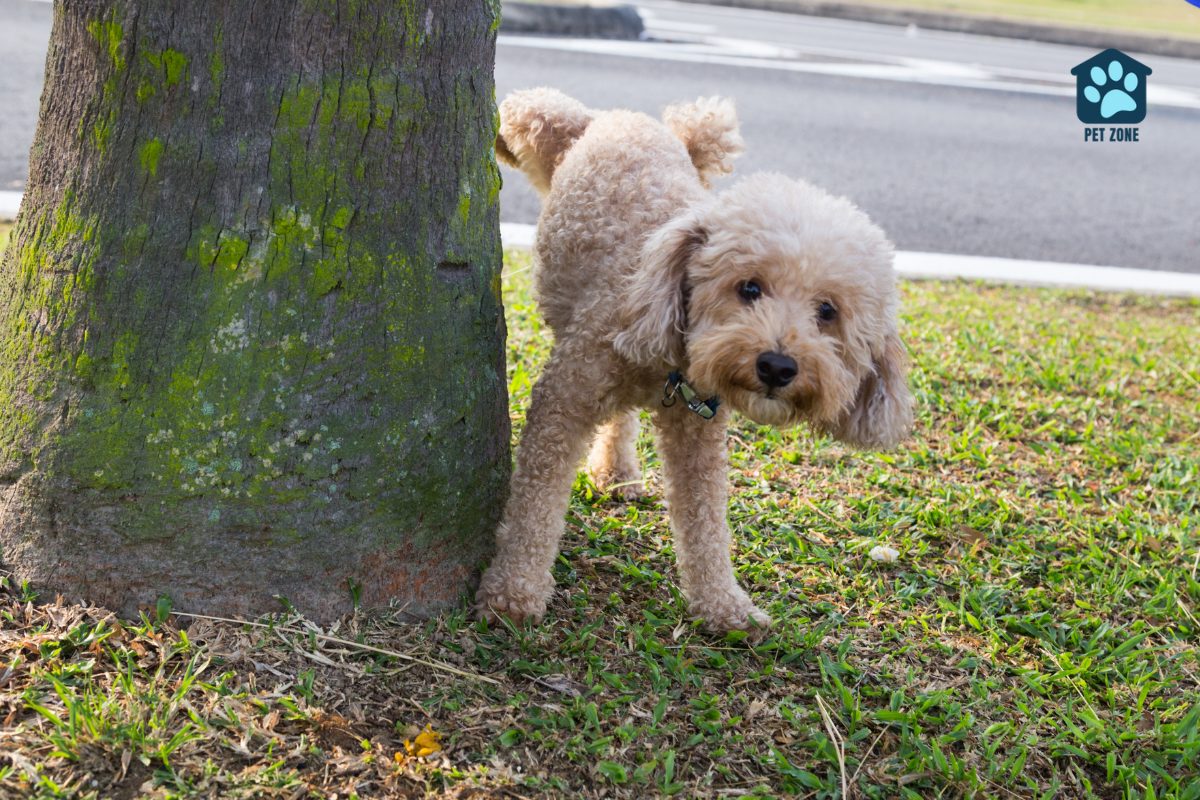
When to Be Concerned
It’s normal for dogs to have a routine when it comes to drinking and peeing. But there are moments when changes in this routine can signal underlying issues.
- Too Frequent or Too Little: If your dog suddenly starts to pee a lot more than usual, or if you notice they’re drinking an excessive amount of water and then not peeing as they should, it may be a cause for concern.
- Discomfort or Straining: If your dog shows signs of pain while trying to pee or if they’re straining and only small amounts of urine come out, it could be a sign of urinary tract infection or bladder stones.
- Color and Odor: The color and smell of your dog’s pee can offer clues about their health. Dark yellow or brown urine, or urine with a very strong odor, can be a sign of dehydration or other health issues.
- Changes After Diet or Medication: If you’ve recently changed your dog’s diet or if they’re on new medication, and you notice a change in their drinking or peeing habits, it might be related.
- Increased Nighttime Peeing: If your dog suddenly needs to go pee frequently at night or if they have accidents indoors when they previously didn’t, it could signal a health issue.
Always prioritize your dog’s well-being. If you notice any unusual behaviors or patterns related to their drinking or peeing, take them to the vet. Catching potential problems early can make all the difference in ensuring your furry friend stays healthy.
Tips for Managing Your Dog’s Pee Schedule
Having a better grasp on when your dog might need to pee after drinking can make life smoother for both of you. Here are some helpful tips:
- Consistency is Key: Just as you have a daily routine, your dog benefits from one too. Feed them, offer water, and take them out to pee at roughly the same times each day.
- Observation Helps: Spend some time observing your dog’s habits. When do they typically drink the most water? When do they usually need to pee after drinking? Noting these times can help you anticipate and manage their needs.
- Limit Water Before Bed: To avoid nighttime accidents, especially with puppies, try limiting water intake a couple of hours before bedtime. But ensure they have access to plenty of water during the day.
- Use Potty Bells: Train your dog to signal when they need to go out. Potty bells, which hang by the door, can be a useful tool. Every time they need to pee, guide them to hit the bell. Over time, they’ll learn to use it to signal their need.
- Reward Good Behavior: Every time your dog signals they need to go or pee outside, give your dog a reward, such as praise or treats. Positive reinforcement helps solidify good habits.
- Stay Calm During Accidents: Accidents happen. Instead of scolding, clean it up and try to determine why it happened. Was it longer than usual since their last trip out? Did they drink an unusually large amount of water? Use it as a learning opportunity.
- Stay Informed: Understanding factors like age, health conditions, or changes in behavior can help you better predict and manage when your dog will need to pee.
By implementing these tips and staying observant, you can ensure that both you and your dog have a more comfortable and understanding relationship when it comes to their pee schedule.
If you’re interested in the potty bell idea, check out this very popular option that over 20,000 dog owners have given a positive rating!
Luckyiren Potty Bells for the doorknob are a convenient and effective solution for pet owners looking to communicate with their dogs when it's time for outdoor bathroom breaks.
Featuring a durable and adjustable nylon belt with three snaps/buttons, they can easily fit different door handles and adapt to your dog's height.
While it's important to note that some training may be required, based on buyer feedback, most puppies quickly learn to use these bells effectively.
- Affordable
- Durable
- Quality construction
Conclusion
Understanding when your dog might need to pee after drinking water is an essential part of pet ownership. It ensures their comfort, helps in training, and can even give you insights into their overall health. From the tiny, energetic puppy who might need to go soon after drinking, to the senior dog whose patterns change with age, each dog is unique.
Always remember:
- Monitor water intake, especially during warm weather or after play sessions.
- Know the signs that your dog needs to go out and respect them.
- Stay alert to any sudden changes in pee patterns or habits.
- Regular schedules and routines benefit both you and your dog.
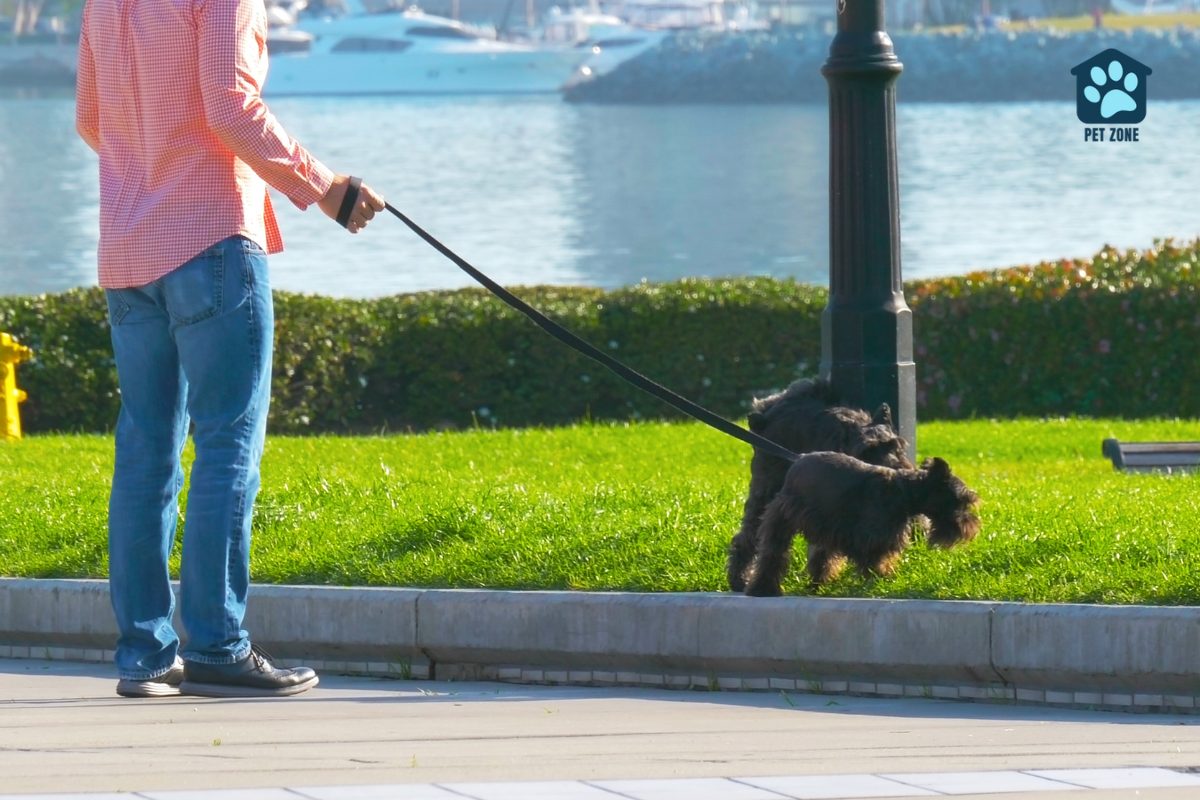
Finally, your bond with your dog is special. The more you understand and respond to their needs, the stronger that bond becomes. Whether they drink a full bowl of water or just a small sip, being there for them, knowing when they might want to head outdoors, and recognizing the signs of potential health concerns make all the difference.
Feel free to leave your thoughts in the comments below, and if you found this article enlightening, don’t hesitate to share it with your friends on social media!
As an Amazon Associate I earn from qualifying purchases.
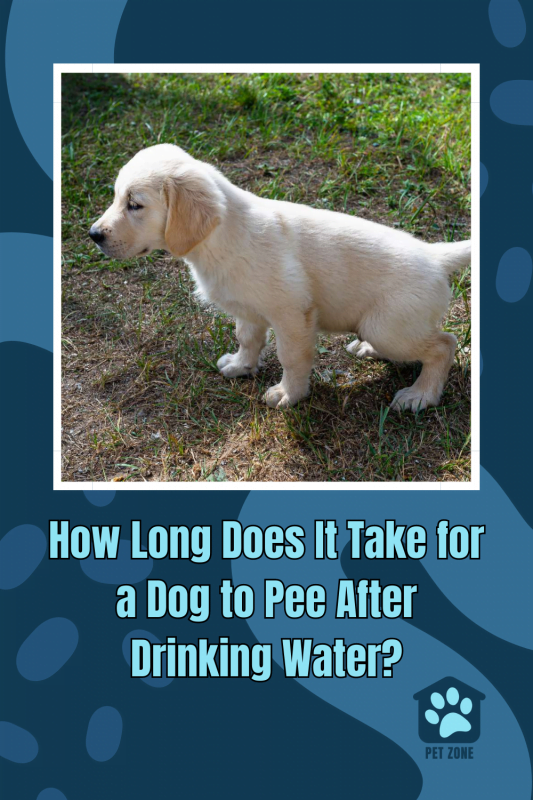


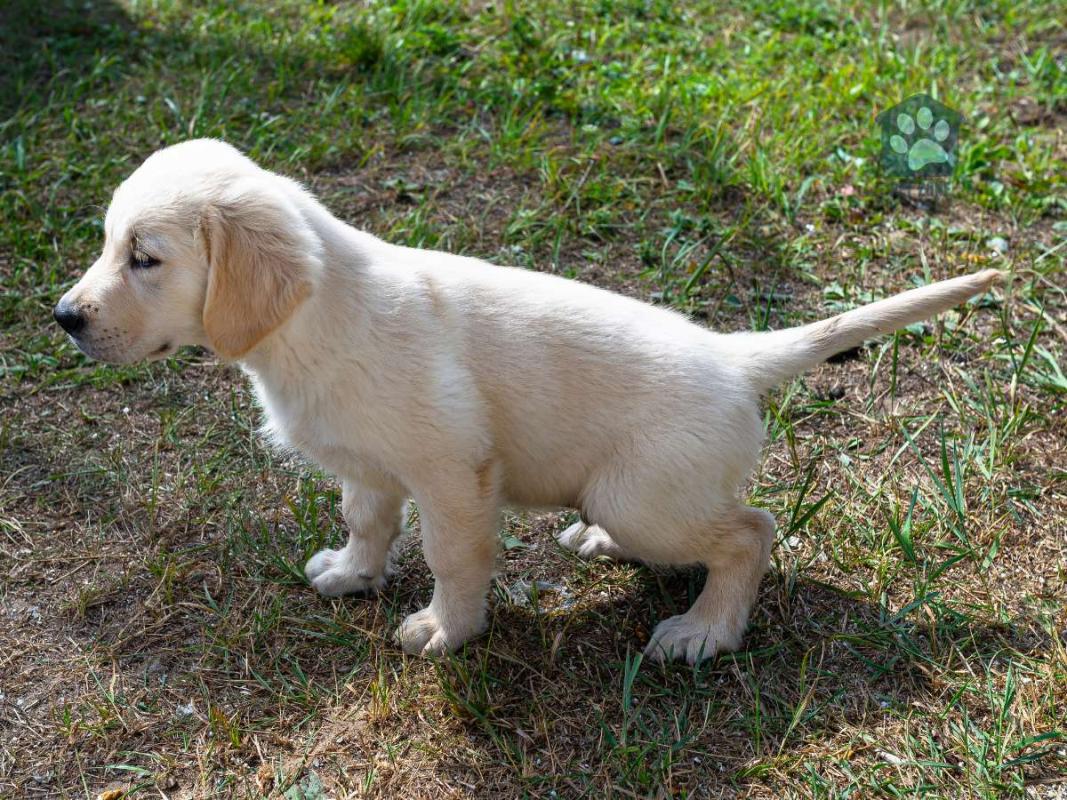
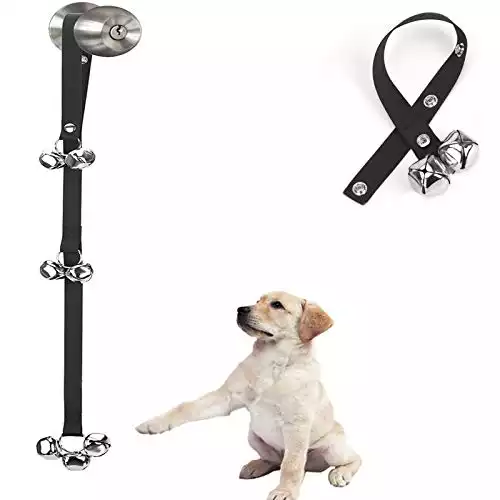
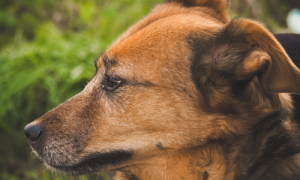
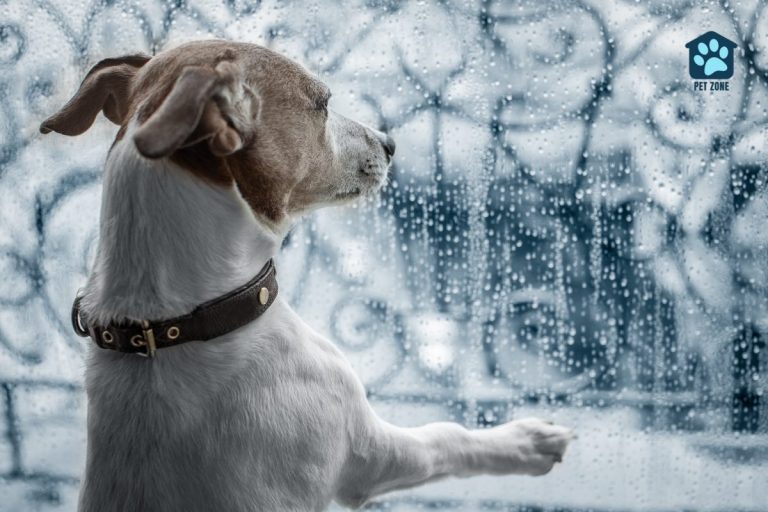
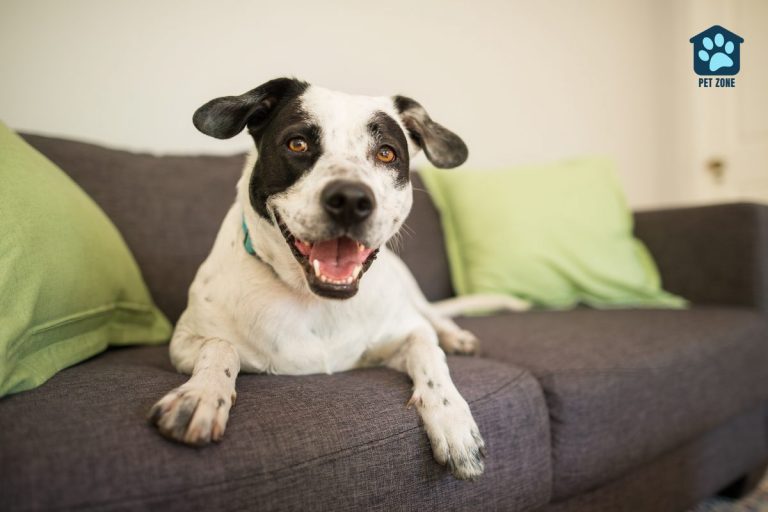
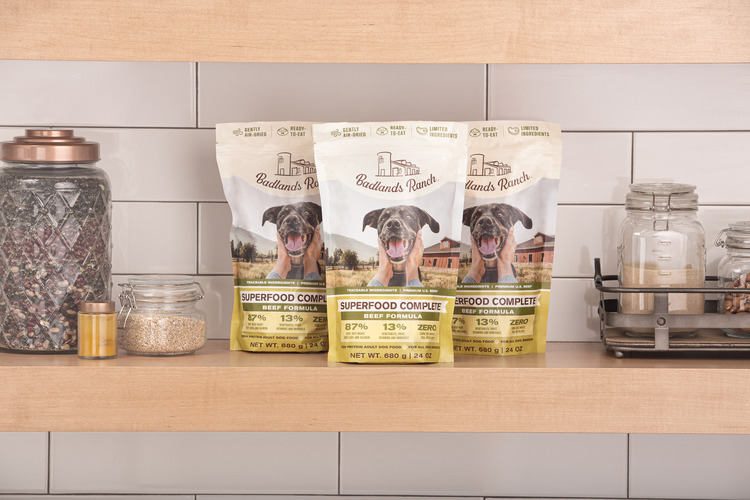
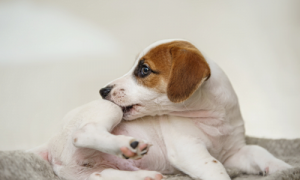
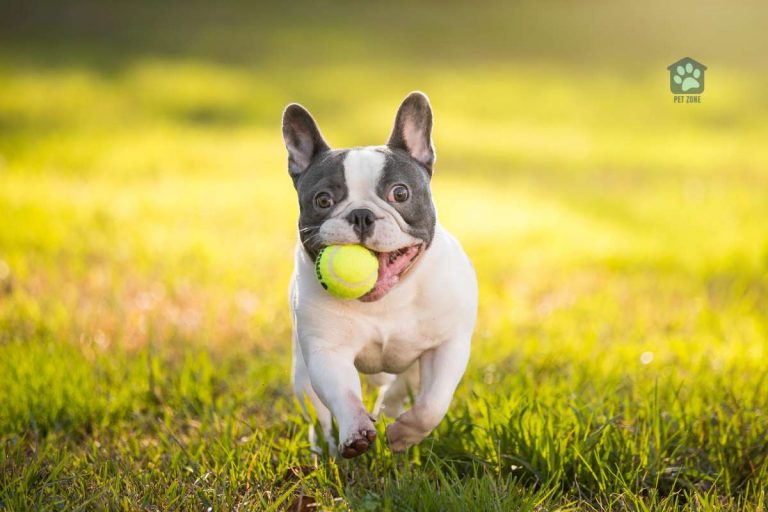
This is a great article! I live on a sailboat and we don’t always get to stick to a schedule for going ashore to pee. But ensuring our dog gets enough water each day is essential. Thanks for this article.
Such a great article! I used to have a pee tracker for our puppy so I could see how often he’d pee after drinking – I was able to see it was on average 20 mins after drinking. Knowing this definitely helped with less accidents inside the house.
Thanks for a great article
We have a golden retriever puppy. This was was so helpful!
Great and helpful puppy potty info! This is full of amazing info for both new and seasoned pup parents as potty needs certainly change over time. My senior girl at 12 has changed a lot recently!
Super informative. I only potty trained three dogs. A Consistent routine was the most important factor. If I strayed from the routine, we had accidents.
These are great tips for monitoring a pup’s or dog’s pee! There’s so much I didn’t know. I haven’t had a dog but my partner and I plan on getting a puppy one day.
Will keep this in mind when I will be a dog owner 🙌
This is good advice for new dog owners!
Very informative, especially for raising puppies! It took us a minute to realize just how small a pup’s bladder is…lol. Thanks for sharing!
Thanks for sharing. Helpful post and guide for new pawrents.
12 minutes holy moly
What a great post! I will have to share this one with my daughter, she just purchased a dog a few weeks ago and is training to potty-train her. It’s good to know these routine tips, it can make things a lot easier for both the dog and its owner.
Thank you for the wealth of information in this article. Covers all the bases and truly helpful for me as we’re planning to add a little one to our family soon.
Thanks for sharing- this is very informative for all the pawrents!